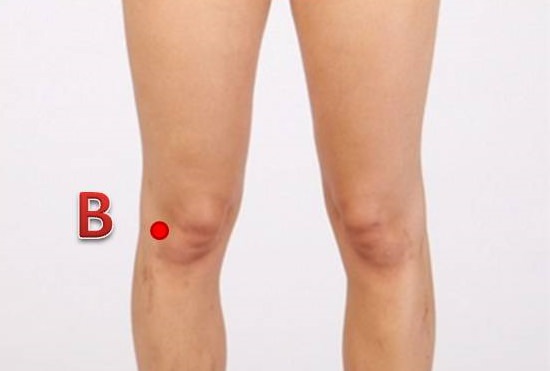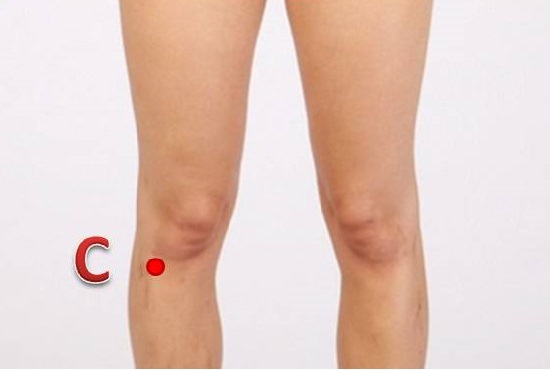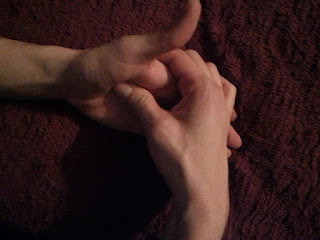



http://www.ba-bamail.com/content.aspx?emailid=22922






Difficulty Sleeping ? This Banana Tea Recipe Works Wonders There are nights when one cannot get to sleep. While
everyone experiences occasional restless nights, if you
regularly find it hard to get back to sleep within
15 to 20 minutes, or if you wake up more than two to
three times per night, your lack of sleep can disrupt your
daily life, so it is worth addressing. While there are a
number of natural remedies and herbs to help put you to
sleep, here's another remedy you can try - in fact,
it is highly recommended.
Banana Tea for Deep Sleep This organic, banana-infused sleep remedy works wonders
and it tastes great too. But, how does it work? Bananas,
the peels in particular, are loaded with potassium and
magnesium - two vital nutrients that will help you sleep
better. While magnesium will help prevent sleep disturbances,
both nutrients work together to help relax the muscles.
Note: It is also important to use organic bananas,
because they are free of harmful pesticides.
As this recipe requires you to heat the boiled peel,
non-organic bananas should be avoided.
Here's how: Prepare in under 10 minutes and enjoy
every night before bed: Ingredients 1 organic banana 1 small pot of water Dash of cinnamon (optional) Directions 1. Cut both ends off the banana, then place it, peel
and all, into boiling water. Let the banana cook for
around 10 minutes.
2. Use a colander to pour the banana water into a mug.
If you like, you may sprinkle some cinnamon at this point.
Drink the tea one hour before bed time.
3. The left over banana is pretty tasty too. Serve
it on a plate and dig in - skin included.
The texture is soft, gooey and very enjoyable.
How Sleep Deprivation Affects Your Body When your body doesn't get enough sleep it suffers.
A lack of sleep affects your mood and your short
term memory. Processing simple things can become
challenging and it also affects your emotional response.
A lack of sleep has also been linked to serious
health conditions. Why Sleeping Pills are Not a Safe Alternative Almost half of Americans suffer from insomnia or
inadequate sleep. Yet, while it may be tempting to
resort to sleeping pills, they cannot address the
root of the problem. Rather, sleeping pills provide
a short term fix. Furthermore, those frequently
prescribed Benzodiazepines, like Xanax and Valium,
which are used to treat anxiety disorders by increasing
drowsiness can, unfortunately, be worryingly addictive
too. In addition, Barbiturates suppress the central
nervous system and act very much like anaesthetics
and sedatives.
As with all drugs, there's a list of side effects that
accompany sleeping pills. Besides being addictive, they
can cause constipation, dizziness, a tendency to lose
focus and memory, stomach pain, weakness, uncontrollable
shaking and parasombias (doing things without realizing).






Epsom Salt is the little-known mineral that can fix just about anything. Named after the spring in Surrey, England in which it was found, this mineral can be ingested or applied topically. Its chemical name is magnesium sulfate, and this natural remedy offers many health benefits.
Aches and pains.1. Physical stress: Soak in a warm tub and add Epsom salts. When the salt is dissolved in the water, it is readily absorbed through the skin. The magnesium ions can help with stress, as they promote serotonin production and lessen adrenaline impact. Magnesium also helps with the energy cell production, reducing restlessness and anxiety.
2. Pain and cramping: A long soak can also offer relief for pained muscles and inflamed joints. The therapeutic salt bath also works at soothing abdominal cramps, tension headaches, and tired feet.
3. Constipation: When ingested, Epsom salts also moonlight as saline laxatives. You can drink a cup of warm water with two tablespoons of salt dissolved in it to sooth constipation. However, it is not recommended that you use this remedy more than once per day and it's best to consult your doctor if symptoms persist.
Medical purposes.
4. Clean arteries: Epsom salts boosts the health of your arteries by decreasing inflammation and protecting your arteries' elasticity. This can help improve your circulation and ward off cardiovascular illness, with less risk of clots, plaque build up, and arterial wall damage. To reap the benefits, soak in a bath of Epsom salts three to four times a week.
5. Blood sugar regulator: Both the magnesium and sulfate in Epsom salts help the body produce and use insulin better. With regular oral or transdermal Epsom salt intake, your blood sugar can be better regulated, resulting in improved daily energy levels and a lowered risk for diabetes.
6. Nerve function: Epsom salts facilitate many enzymatic functions. Their positive effects on the body include regulating fluid retention in cells and using calcium to transmit chemical signals in the nervous system.
7. Healthy feet: Not only will soaking your feet in Epsom salts relieve those daily aches and pains, but it also can treat athlete’s foot, reducing the itching and burning, and help heal toenail fungal infections.
First aid.

8. Splinters: Loosen a splinter by soaking the inflicted body part in warm water with Epsom salts. The mineral acts as an anti-inflammatory around the wound and will soften the splinter, allowing for easy removal.
9. Sprains and bruises: Adding two cups of the salt to a warm bath can help alleviate inflammation and pain caused by sprains and bruises. Soak in the tub and the pain will soon be lessened.
Beauty routine.
10. Exfoliate the skin: Take a handful of the salt and rub it gently over damp skin, to remove dead skin cells. Your skin will be left looking healthier and feeling soft. This method is suitable for your hands, feet and any other skin areas that need exfoliating.
11. Face cleanser: Add a teaspoon of Epsom salts to your regular cleanser or make your own clarifying treatment with this recipe:
Chop a ripe tomato finely and mix it with a pureed egg white.
Add to this half a teaspoon of vitamin B5 powder, 1 teaspoon aloe vera gel, 1 teaspoon of Epsom salts and a few drops of thyme essential oil. Apply the mixture to your face and leave it on for 15 minutes.
Rinse it off with lukewarm water.
12. Loosen blackheads: You can use the salts to remove oil and dead skin cells from your pores. Exfoliate to remove any dead skin from around the blackheads. In half a cup of hot water, mix a teaspoon of Epsom salts with four drops of iodine, stirring until the salts are completely dissolved. Let the mixture cool down a bit and then massage it onto the blackheads. Let the treatment dry completely and then wash your face with warm water, patting dry with a cloth.
13. Hair product build up: Remove any excess hairspray or other styling products from you hair by mixing 1 cup of Epsom salt and 1 cup lemon juice into a gallon of water (3.8 liters). Let this solution sit for 24 hours before you start using it. Pour the concoction over your hair. Leave it in for 20 minutes and then wash and condition your hair after.
Around the house.

14. Household hand wash: As an alternative to store-bought hand cleaners, mix Epsom salts with baby oil for soft and clean hands. Store in bottles and stash them next to the sinks in your home.
15. Gardening helper: You can use Epsom salts to help your garden grow. You can use it to fertilize plants and grass, facilitate plants nutrient absorption, prevent leaf curling, remove insects or stop a slug infestation.
16. Clean pots and pans: To treat really dirty dishes pour some Epsom salt into the water as it helps grime come off easier. The salt's abrasive texture helps loosen the food without leaving your pots and pans damaged.
17. Tile and grout cleaner: For an effective tile and grout dirt remover, mix equal parts Epsom salts and liquid dish detergent together. Scrub dirty or stained surfaces with this, allowing the mix to soak in for 2 minutes. The grime is loosened effortlessly. Rinse clean after.
18. Remove detergent build up: Unwanted gunk builds up on the inside of your washing machine over time. Remove detergent build up with Epsom salts to protect your washer and see it running efficiently. Run an empty cycle with hot water, a quart of white vinegar and a cup of Epsom salt. After a minute, stop the cycle and let the solution soak for an hour.
Source:
 ">
">
Massage the middle part of each of your fingers in turn, and look at your fingers. While you’re doing so, think of your fingertips as your head – working your way down your fingers, therefore, is working your way down your neck and shoulders.
|
Massage the entire length of your thumb, warming it up in the process. Once you’ve done so, apply direct pressure to the center of your palm using your warmed up thumb, holding it in place for a couple of minutes. For a Cold or Sore Throat For Fatigue Start off by massaging your whole hand, then apply direct pressure to the point on your middle finger, as shown in the photo. For Menstrual Cramps or Abdominal Pain
Additional tips
1. Rub your hands together for one minute prior to starting any of these exercises to increase hand energy and sensitivity. Use the index finger and thumb on your opposite hand to gently massage and warm up the area to be worked on.
2. The ever-present tip - “make sure you drink lots of water and stay hydrated” in beauty and health articles - is here too. Proper hydration allows for optimal tissue health and helps your body get rid of toxins. After all, our bodies are almost entirely made up of water.
3. Avoid deep pressure to the web of the hand if you are pregnant.
Content and Image Source: Lifehack
|